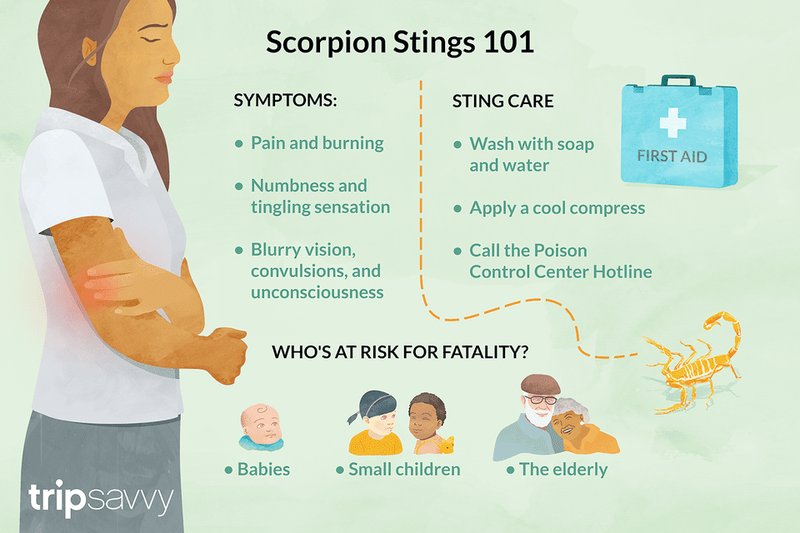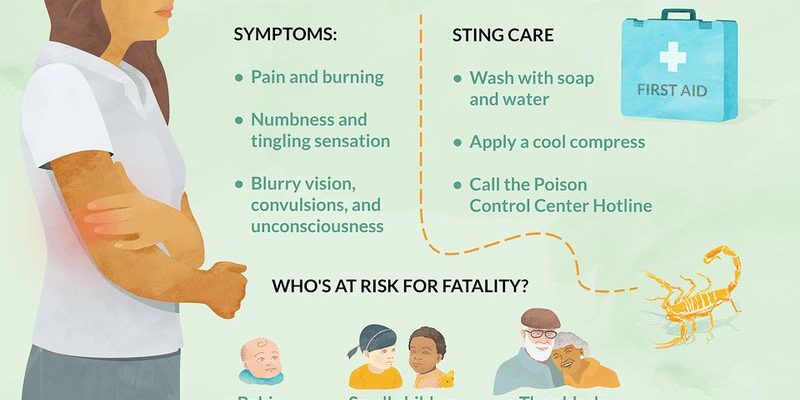
Think of scorpions like nature’s tiny warriors. They wield a sting that can pack a punch, much like an unexpected jab during a friendly game of poker. It’s sudden and can leave you reeling. Knowing how to respond calmly and efficiently can make all the difference. So, let’s explore the first aid steps for scorpion stings, breaking it down into simple, easy-to-follow advice that anyone can remember.
Understanding Scorpion Stings
Before jumping into first aid, let’s get to know what we’re dealing with. Scorpions are arachnids, and their stings can vary from mild discomfort to severe pain depending on the species. In fact, the majority of scorpion stings are not life-threatening, especially if you’re in an area where the venomous types are not common.
Here’s the thing: most people react to a sting with fear and surprise. This is completely normal. A sting can cause symptoms like swelling, redness, and intense pain in the affected area. In some cases, you might even feel nausea or have difficulty breathing. If this happens, it’s a sign that you should seek medical help right away.
Identifying the Severity of the Sting
First things first, not all stings are created equal. You might be wondering how to tell if you’re dealing with a serious situation. The key is to observe the symptoms.
– Mild Symptoms: These usually include localized pain, redness, and swelling. Think of it like getting a bee sting—unpleasant, but often just a nuisance.
– Severe Symptoms: Watch out for difficulty breathing, excessive sweating, or muscle spasms. If these happen, you should immediately get help. It’s crucial to remember that while most stings are manageable at home, some require professional medical treatment.
Immediate First Aid Steps
When someone gets stung, your first instinct might be to panic. But taking a deep breath can help. Here’s how to manage a scorpion sting right after it happens.
Step 1: Remain Calm
After a sting, the person affected might feel anxious or scared. It’s important to stay calm and reassure them. Stress can sometimes worsen symptoms, so your cool demeanor can make a big difference!
Step 2: Clean the Area
Next, gently clean the sting site with soap and water. This helps remove any potential pathogens and can reduce the risk of infection. Pat it dry, but avoid rubbing the area, as this could irritate the skin further.
Step 3: Apply a Cold Compress
Using a cold pack or a clean cloth dipped in cold water can significantly help alleviate pain and reduce swelling. Just make sure to wrap the cold item in a towel to avoid direct contact with the skin. Aim for about 10-15 minutes of application. Here’s a pro tip: if you don’t have a cold pack handy, even a bag of frozen peas works wonders!
Step 4: Manage Pain
Over-the-counter pain relief medications like ibuprofen or acetaminophen can help relieve discomfort. Be sure to follow the dosage instructions on the packaging. If the pain persists or worsens, it’s best to consult a doctor.
When to Seek Medical Attention
While most scorpion stings can be treated at home, there are clear signs when it’s time to call in backup.
Signs That Require Immediate Attention
If you notice symptoms like difficulty breathing, rapid heart rate, or severe pain that doesn’t improve with home care, don’t hesitate to head to the emergency room. It’s always better to err on the side of caution.
Importance of Professional Evaluation
Even if symptoms seem mild at first, getting checked out can provide peace of mind. A medical professional may recommend additional treatment, like an antihistamine or, in rare cases, antivenom for serious stings.
Preventing Scorpion Stings
Now that you know how to handle a sting, preventing one in the first place is the best approach. Here are some tips to keep you safe.
Stay Aware of Your Surroundings
If you’re in an area known for scorpions, like certain deserts or wooded areas, be extra cautious. Always check your shoes and clothing before putting them on, as scorpions often hide in unexpected places.
Use Appropriate Clothing
Wearing long pants and closed-toe shoes can add an extra layer of protection. Think of it like donning armor before entering a potential battlefield. This simple step can make a significant difference.
What to Do If It Happens Again
If you’ve been stung before, you might be on high alert in scorpion territory. It’s helpful to keep a first aid kit handy that includes:
- Adhesive bandages
- Antiseptic wipes
- Pain relievers
- Cold packs
Being prepared is half the battle. Familiarizing yourself with first aid techniques can empower you and make a stressful situation feel more manageable.
Final Thoughts
Dealing with a scorpion sting can be unpleasant, but with the right knowledge, you can handle it like a pro. Remember, the key steps are to stay calm, clean the sting site, apply a cold compress, and seek medical attention when necessary.
It’s about being smart and prepared. So, whether you’re off on an adventure in the great outdoors or just enjoying a summer evening, knowing what to do can keep you safe. Stay informed, and don’t let scorpions sting your fun!

